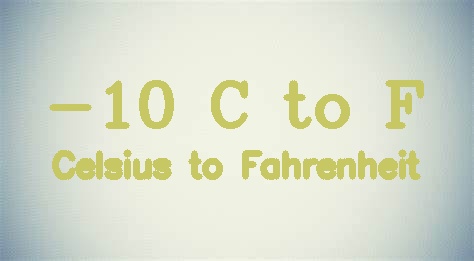![-1 Celsius to Fahrenheit [-1 °C to °F]](https://convertctof.com/images/post/-1-c-to-f.jpg)
For a lot of physical quantities, there are different units that are used for them in different situations. For example, for length there are units like meter and feet, for temperature there are Fahrenheit and Celsius. In these particular cases, the unit we will use depends mostly of country that we are in.
There are also different units used for describing mass, like for example Gram (g) and Teaspoon (tsp). What is different in this case regarding to cases we mentioned before is that the use of these units doesn’t depend on the country that we are in, but mostly on the context of our story. If we are talking about some scientific measurements, we will use Gram, but often when we talk about some food recipe or medications, we will use Teaspoon.
It sounds like a reasonable selection of situations, because teaspoon is something that is used in kitchen or in general in cooking, baking, measurements in home (for example, if you want to give your child some medicine, it would be very hard to give it in Gram and not everyone would be able to measure it correctly). Also, Kilogram is a SI unit for mass, so then its smaller part – Gram (which is 0.001kg) is normally used in scientific calculations. It is used when there are some smaller objects that can’t be well described with Kilogram and it is easier for our brains to register it in Gram.
How do we convert Gram to Teaspoon?
There might be a situation where we want to convert mass given in Gram to Teaspoon. For example, we are baking some cake, but the measures are given in Gram. We don’t have a scale so we don’t have a way to measure the ingredients in Gram. Then it would be useful to know how to convert Gram to Teaspoon.
It is a very easy calculation. When you have mass given in Gram, you simply divide that number with 5 and get equivalent number in Teaspoon.
What this basically means is that 5 Gram is equivalent to 1 Teaspoon.
Let’s try this on an example.
We have a recipe that says that we need to use 17g of sugar. We don’t have a measure and we are wondering how to put the exact amount of sugar. Let’s calculate then!
17g= 17/5 tsp= 3.4 tsp
It can be tricky with this kind of number as an answer, when we have a decimal point, but we can do it approximately. Even if we can’t put the exact measure of 3.4 tsp, we know that it’s 3 and not for example 7 Teaspoon and also, we can see that it’s close to the half of Teaspoon over those 3 Teaspoon.
- Do we need to full the spoon when we measure 1 Teaspoon or how do we do it?
There isn’t a clear answer to this question, it depends on the recipe you are following.
There are 2 types of measuring:
• Leveled teaspoon –the ingredient we are adding shouldn’t go over the egde of the spoon • Rounded (heaped) teaspoon –the ingredient we are adding should fill the spoon as much as possible
Teaspoon is a measure that can also be used for volume, so when we are talking about volume there the answer is clear, the spoon should be leveled. Here it can really make a difference, so it is important to find a recipe that clearly states what kind of teaspoon we should add. But, if you have a recipe that doesn’t clearly state which to use and you still have to use that recipe, you should go with leveled.
- How to measure 1/3 of a teaspoon?
There can be a situation where we should measure 1/3 of a teaspoon. If we have a scale, we could convert Teaspoon to Gram and then know how much of the ingredient to use. In case we don’t have a scale, we can always try to if we have a teaspoon to fill a third of it, but it can be really difficult. There are some gadgets that can help with it, we can find in stores a bunch of measures that stand together, like a keychain, where we have 1/2 , 1/3, 1/4 etc. of Teaspoon that can help us use precisely measure how much of an ingredient we need to use.
If you don’t have time or place where to find such a gadget, you can do it other way also!
You should fill one teaspoon of the ingredient you want and then pour it on some surface. Then, there you could divide the substance you have in as many visually equal parts as you need (in this example it was 3).
